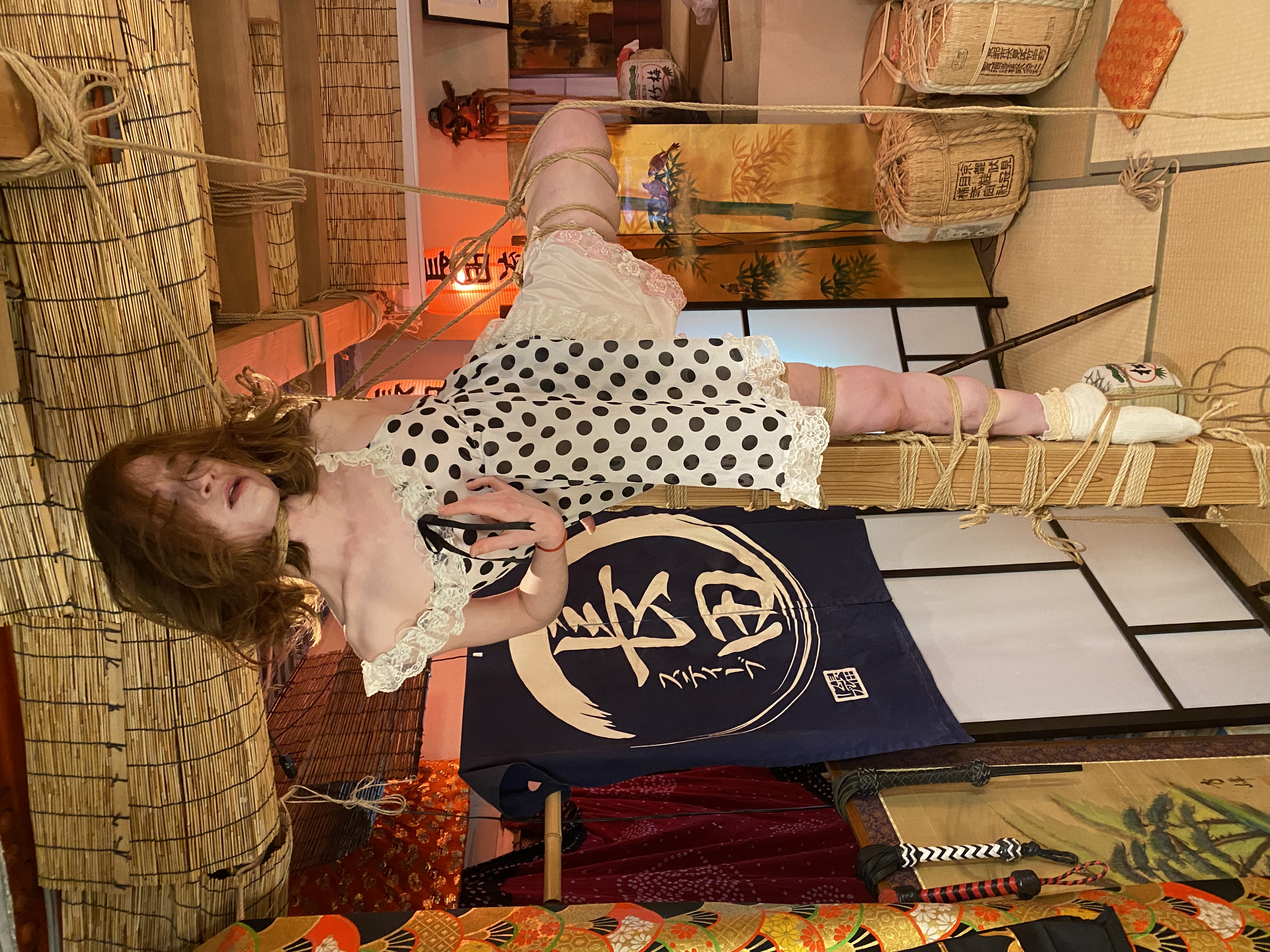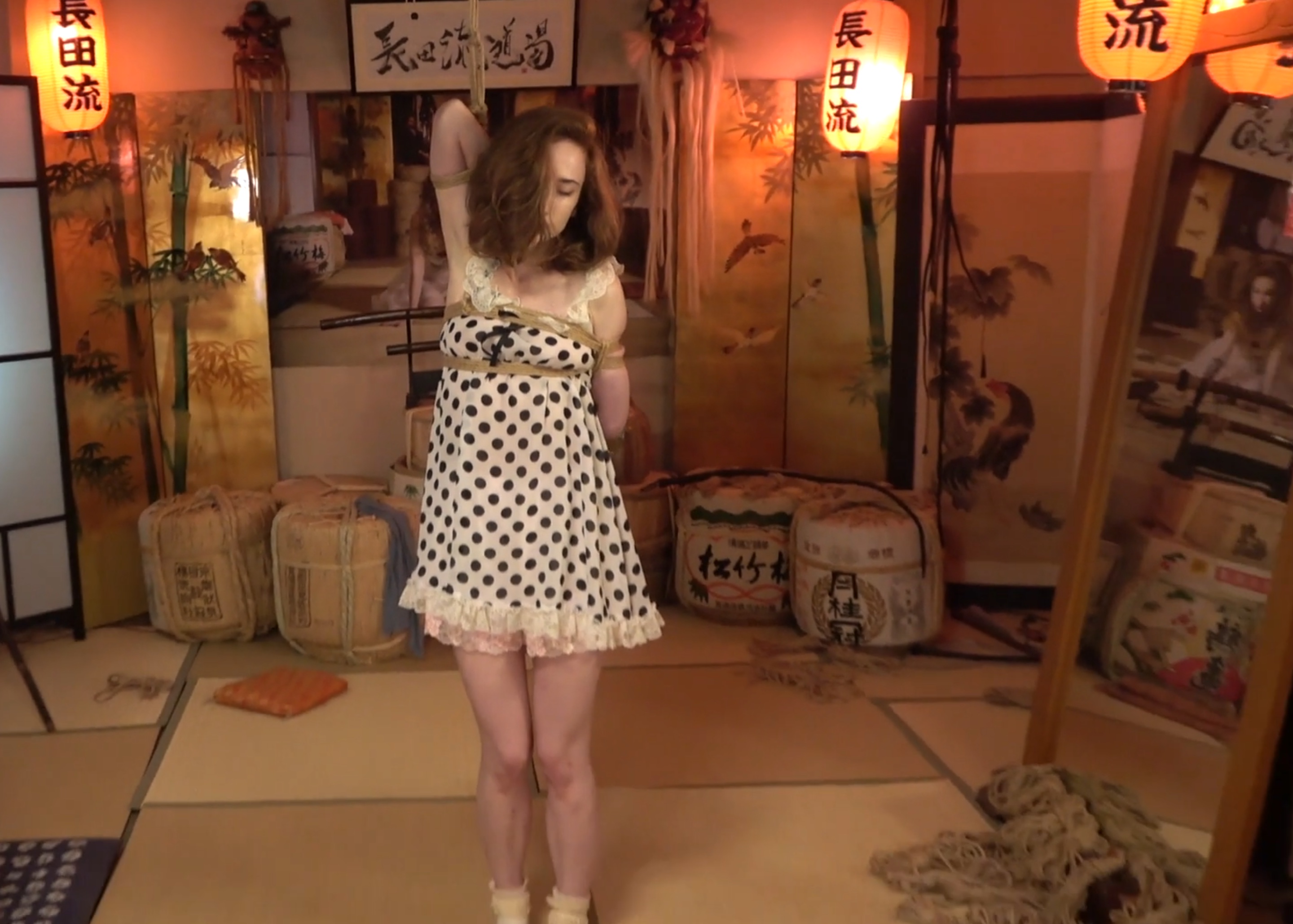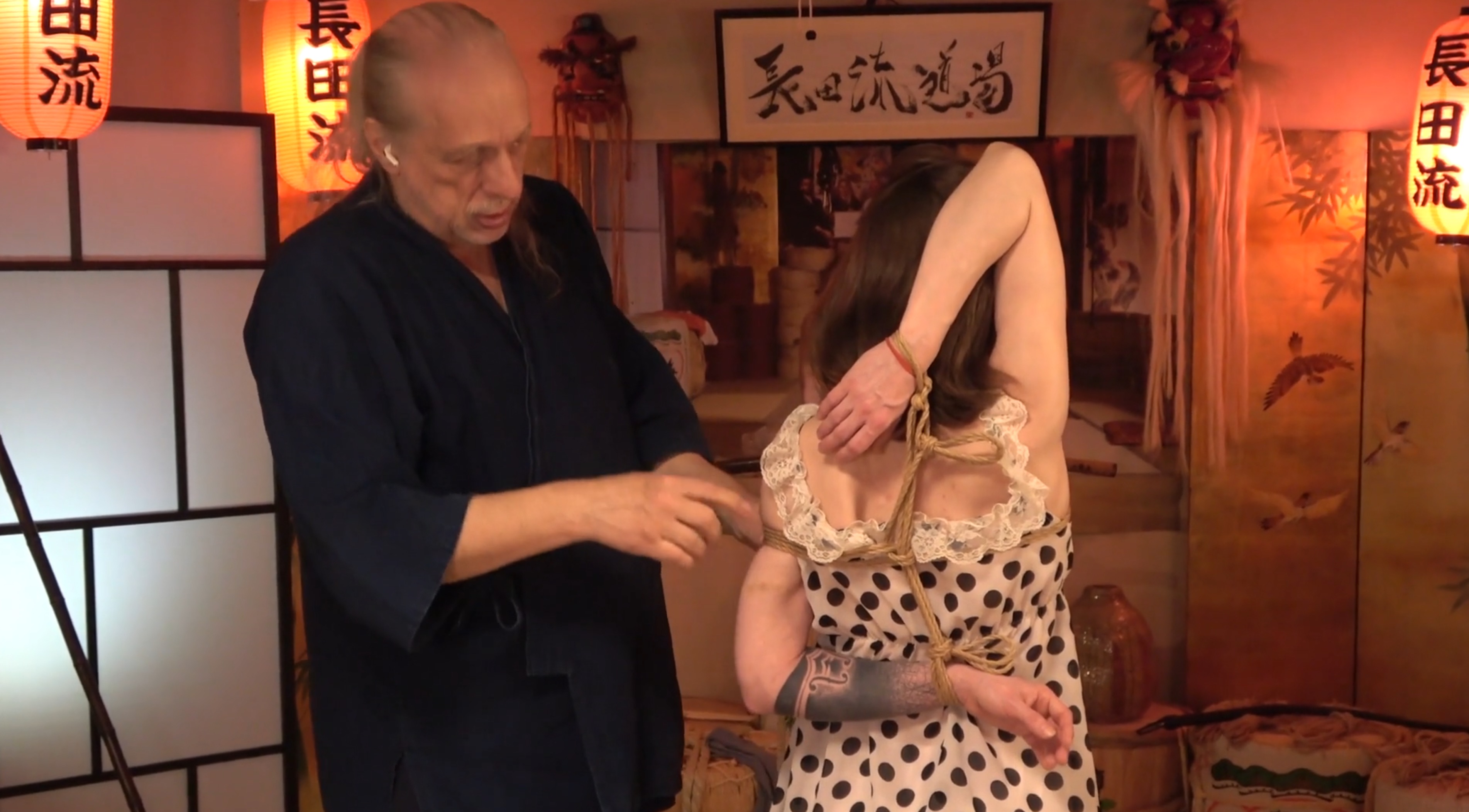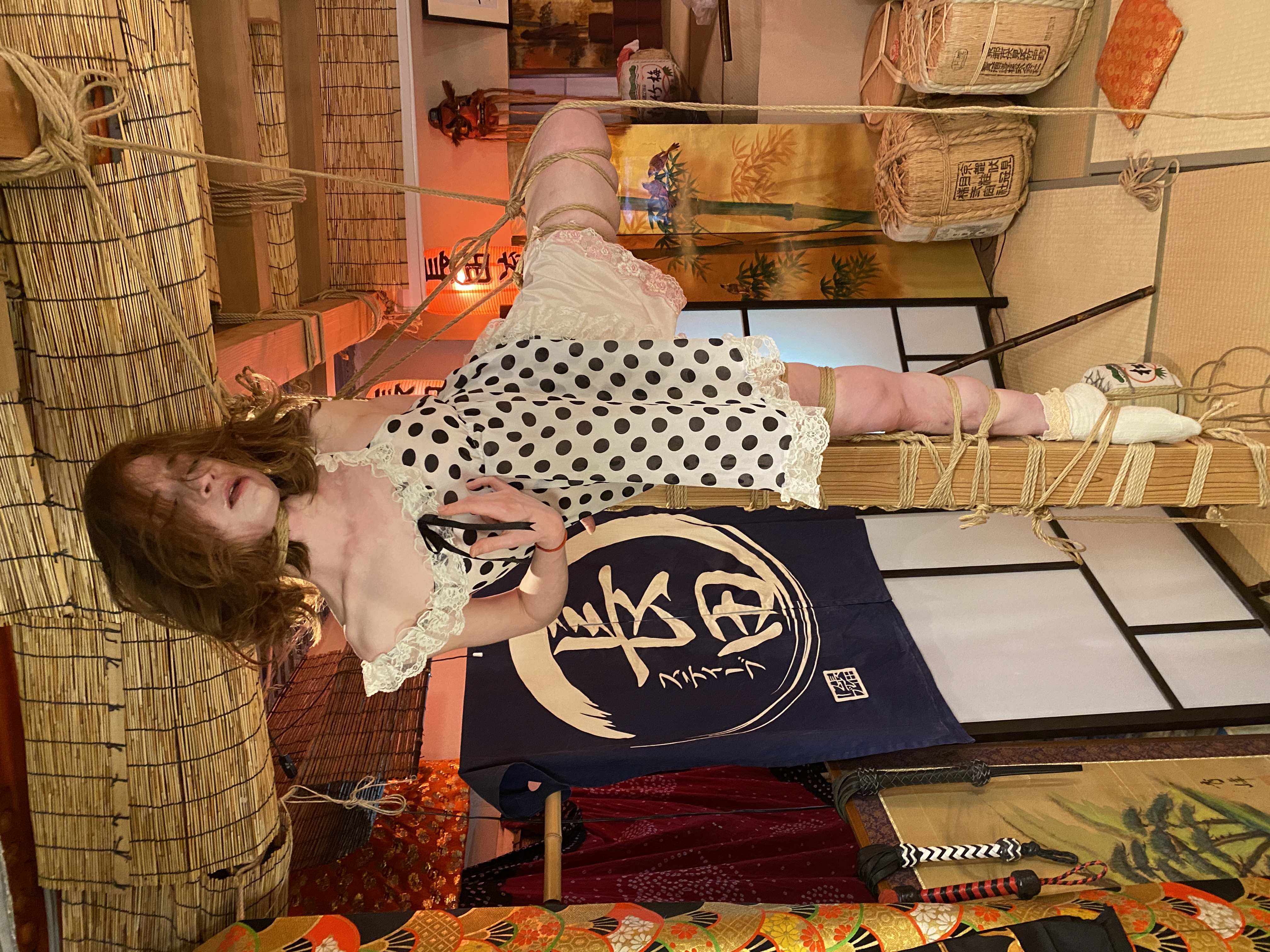
A word on pole suspensions.
It is the nature of hashira suspensions (柱吊り) that the rope partner (ukete-san, 受け手さん) is 'fixed' to the pole with little room for movement. The model thus finds herself stuck in the air completely immobilized, which could be described as a 'game over' situation.
The physical and mental experiences of a pole suspension are different from 'free' ceiling suspensions where the model can shift her weight and will often feel encouraged to indulge in a kind of aerial figure dance.
With nowhere to go the model needs to deal with the situation in a different way. Mainly by going inside herself, finding her inner core. This type of situation is often associated with 'semenawa' (責め縄) -- where some kind of 'suffering' is taking place.
Please note that the pole suspension demonstrated in this workshop doesn't fall into the "orthodox" group of hashirazuri. It is more like a happy-family fun bondage sporting some sort of recreational value.
A word on the running soldier.
On whatever trail, let wisdom do prevail.
It's your choice whether to take an easy route or challenge a treacherous ascent.
Once reaching the summit the view is the same.
The teppo suspension (teppozuri, 鉄砲吊り) is an "orthodox" type of suspension not to be messed with. The way the imaginary rifle is carried in a teppo bondage is strictly defined, leaving no room for error. The "running man" hanging position is what the name says, not an acrobatic pose or a circus situation. Overall, the "rifle" suspension is fairly static, leaving very little room for the model to express herself. And it is definitely not designed for progressions.
I'd even go as far as to say that only riggers unaware of the shibari/kinbaku "tradition" would dare disrespecting the pose of a running soldier by inventing fanciful transitions.
Western riggers, stick to your guns.
Try not to turn every suspension into a progression.
"Crazy" Pole Suspension

Teppo / 鉄砲
.

Teppo / 鉄砲
.

Teppo / 鉄砲
.

Hashira / 柱

Hashira / 柱
.

Hashira / 柱
.
The Curriculum
140 minutes
Teppo Suspension / Teppozuri / 鉄砲吊り
Available in
days
days
after you enroll
Pole Suspension / Hashirazuri / 柱吊り
Available in
days
days
after you enroll
